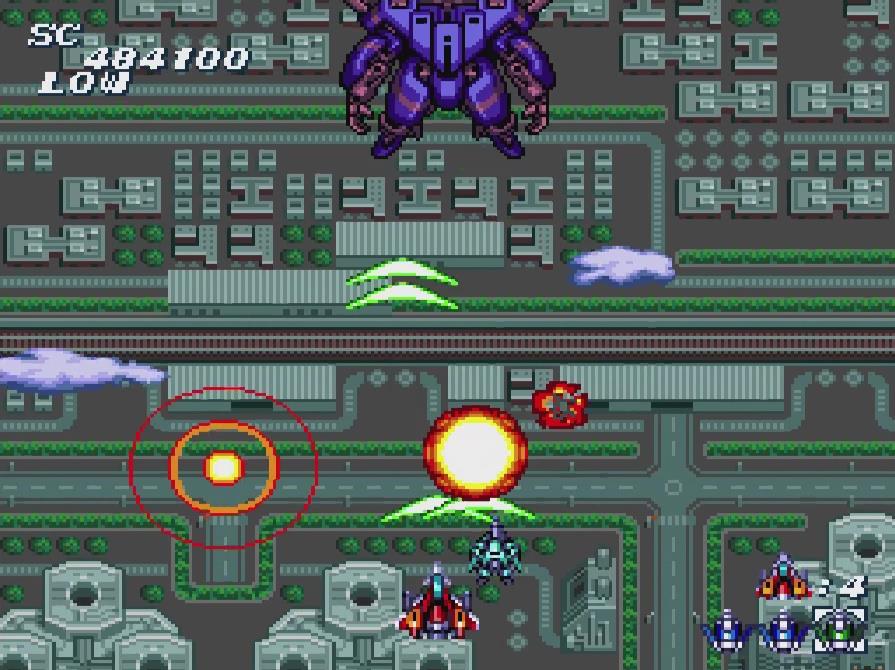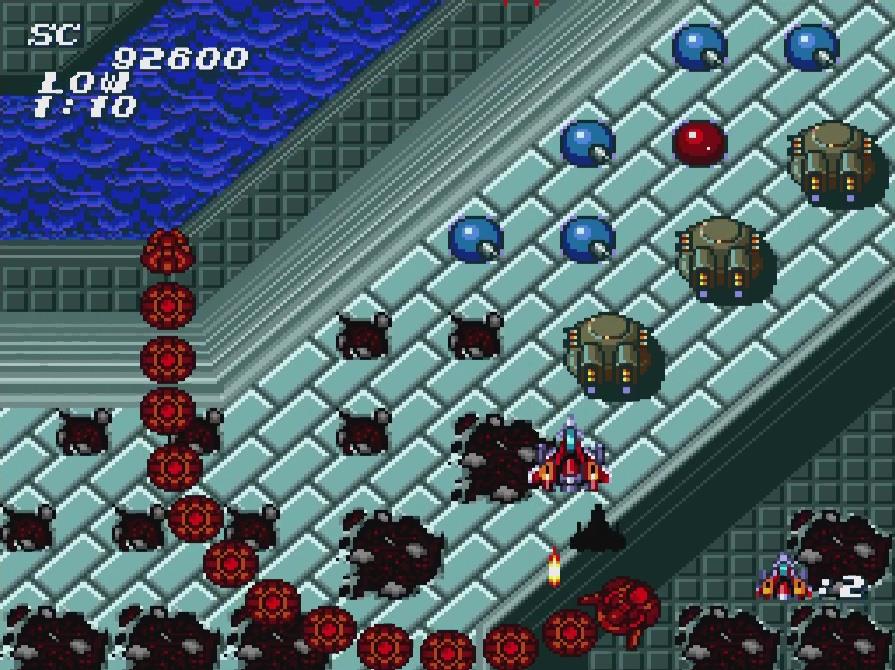Blissful Death: The classic caravan shooting of Soldier Blade
Soldier Blade is one of the best shoot ’em ups on the PC Engine, and one of my favourite shoot ’em ups of all time, full stop.
If you like shoot ’em ups and you’ve never explored the library of the PC Engine, you have been missing out. Chances are if you’re reading this column you already know this, but I thought I’d state it anyway. After all, I’m actually one of those people who likes shoot ’em ups but only really “discovered” the PC Engine relatively recently, thanks to the PC Engine Mini.

It’s not altogether surprising, really; the PC Engine only really ever had limited distribution in Europe, after all, so my primary contact with it was through games magazines. I was always fascinated by what the console offered, but the combination of the extremely limited number of official European models coupled with the prohibitively expensive (for a kid, anyway) import option meant that I was doomed never to enjoy this little wonder-beastie until much later.
Thankfully, the great thing about the PC Engine is that it occupies a wonderful sweet spot in retro gaming where its best games still look, sound and play wonderfully today. And Soldier Blade is one of the best examples of this, offering super smooth, slick shoot ’em up action with a rockin’ soundtrack and some of the crispiest explosions in the business.
Soldier Blade is the fourth game in the Star Soldier series after the original Star Soldier on MSX and Famicom and two predecessors (Super Star Soldier and Final Soldier) on PC Engine. We’ll doubtless look at all the Star Soldier games at one time or another in this series, and I’m picking this one to go first for no reason other than the fact I particularly like it.

Soldier Blade first came about when developer (and PC Engine manufacturer) Hudson Soft was looking for a new title to take on its touring “Caravan” series of video game tournaments. Unfortunately, at the time the company decided it wanted a new game, there were only about six months before the next tournament, meaning that designer Uriko Uribo needed to rush development in order to meet the deadline.
Ultimately the project came together better than anyone could have expected, though the final result also featured the fruits of a number of miscommunications between Uribo and his staff — and with development time so limited, these ended up never getting fixed. Notable examples include a number of enemies that were intended to be strong and challenging to kill actually being complete pushovers, though no-one seemed to mind or indeed even notice. In fact, Soldier Blade has ended up being particularly well-liked for its relatively accessible nature and gentle learning curve.
In Soldier Blade, you take on the role of an ace pilot given the unenviable task of splattering the invading Zeograd Army across the cosmos, because they’re invading Earth and you don’t think they should be doing that. There are seven stages to blast your way through, each featuring a variety of enemies, minibosses and full-on bosses to deal with.

Soldier Blade follows some cues from the classic Raiden series in its power-up system in that there are three different coloured pickups.
Red pickups switch your ship to firing bullets, and picking up additional red items increases the spread of shots, even allowing you to fire behind you.
Green pickups switch your ship to firing a forward-facing wave cannon, which can cover quite a wide area with its shots — even wider if you pick up more green items.
And finally, blue pickups switch your ship to firing a powerful laser. This is strong, but only covers a tiny area of the screen at low levels; once upgraded, however, you spew death across a wide area, so this is a great weapon to try and hold on to.

Where Soldier Blade differs somewhat from Raiden is that it’s not a game where a single hit will kill you. Instead, taking damage will reduce the power of your current weapon by one, and only destroy you if you’re already at the lowest power level. Under most circumstances, being destroyed will send you back to a checkpoint, though if you’re fighting a boss or you have picked up a special “gold life”, you will respawn right where you fell.
The weapons have some additional functions, too. Picking up an item of the same colour as your current weapon when it’s already at full power will unleash a screen-clearing explosion, for example, while hitting the “bomb” button on the controller will use one of your stocked power-ups to set off a powerful special attack according to its colour.
Notably, the bombs you set off manually aren’t screen-clearers by any means; instead, they’re arguably best used against bosses. Blue items shoot out a wide, powerful laser; red items send out your supporting pod to latch on to an enemy component and repeatedly damage it; green items cause your wave beams to “orbit” enemies for a short period, dealing repeated damage.

Soldier Blade is fun because it features some great setpieces and never leaves you feeling like you’re doing the same thing for very long. Bosses are creative and interesting with challenging attack patterns that never feel so daunting that you’ll never be able to get through them, and the levels feature plenty of memorable sequences and enemy formations to deal with. The sense of drama is helped along enormously by the excellent soundtrack by Masaaki Inoue and S-guchi-san, and the whole experience just feels good to play.
One of the best things about Soldier Blade is that it was built for home play rather than being an arcade port. This means that it is balanced to be an enjoyable game rather than a quarter-muncher — and while this may cause some of the more hardcore shmup fans to turn their nose up at its relatively low level of difficulty, it means that the title has broad appeal and is a great entry point to the genre for those who have perhaps been put off by the notoriously challenging nature of many titles.
And for those who feel “wrong” hitting the continue button in a game like this, fret not; you can’t credit-feed your way through Soldier Blade, since continuing resets you back to the start of the stage you were on, so there’s no way of brute-forcing your way through a boss you’ve been having trouble with. You just have to get good — who’d have thought it?

Cap off the package with the two-minute and five-minute “Caravan” score-attack modes that were the main reason the game exists in the first place, and you have a shoot ’em up that is perfect to be enjoyed at any time, whether you have just a few minutes to spare or you feel like sitting down and engaging with it in more depth.
The perfect arcade-style experience in other words — only without some of the annoyances that actual arcade games can bring with them!
Join The Discussion
Rice Digital Discord
Rice Digital Twitter
Rice Digital Facebook
Or write us a letter for the Rice Digital Friday Letters Page by clicking here!
Disclosure: Some links in this article may be affiliate links, which means we may earn a small commission if you make a purchase after clicking on them. This is at no additional cost to you and helps support Rice Digital!
- Letter from the Editor: passing the torch - June 30, 2023
- Super Woden GP 2 is looking promising - June 30, 2023
- Inti Creates is making a 32 bit-style Love Live action platformer - June 26, 2023







